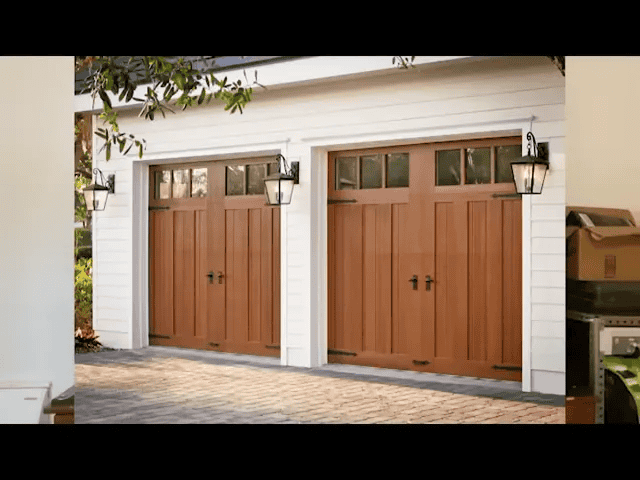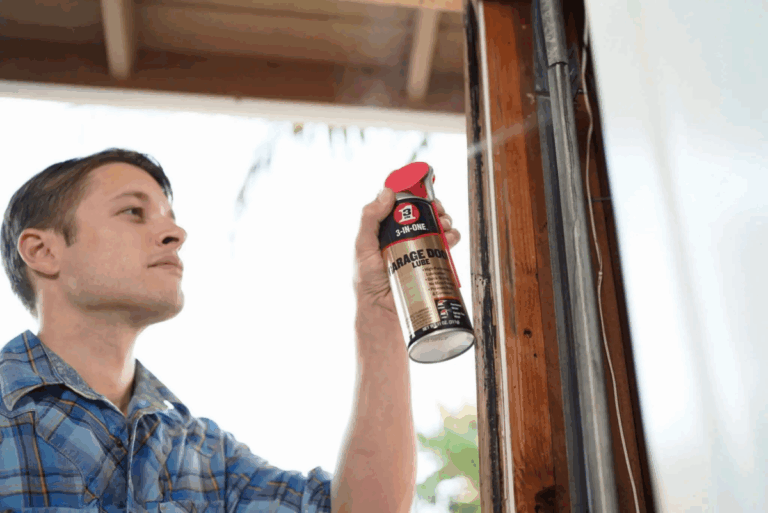Best Tools to Fix Garage Door in Edina, MN – A Practical Guide
Edina Garage Door Repair has assembled a practical guide that explains how to fix garage door problems, which tools are essential, and how to set up a mobile operation that works.
Whether you’re a homeowner who wants to learn how to fix garage door issues themselves or someone considering starting a garage door business, the following instructions, tool lists, and professional tips will be helpful.
Why this guide matters
Fixing a garage door is more than just swapping parts. It is a combination of the right vehicle setup, accurate tools, safety awareness, and knowledge of door systems. Edina Garage Door Repair emphasizes that having a well-equipped truck and knowing which tools will be used on nearly every job will save time, reduce callbacks, and increase profitability. The goal here is to show what it takes to fix garage door problems reliably and repeatedly.
Getting started
Fixing a garage door requires patience, the right gear, and realistic expectations. Edina Garage Door Repair often finds that homeowners attempt installations or repairs and get stuck halfway. A common pattern is that someone will purchase an opener, start the install, and then call for help when tensioning springs, wiring, or alignment becomes tricky. This guide assumes a practical mindset: prepare, prioritize safety, and carry the tools that will be used on nearly every job.
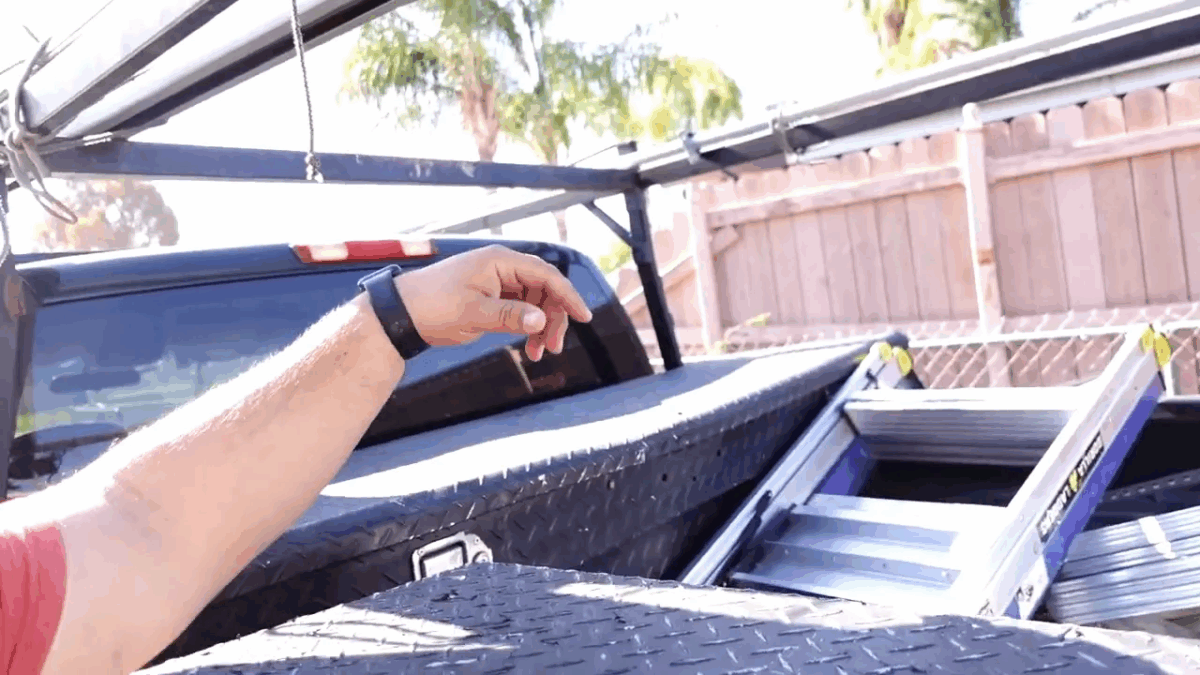
Essential vehicle and rack setup
A service vehicle is the number one tool. Edina Garage Door Repair recommends a reliable, well-maintained truck or van that can carry ladders, doors, openers, and parts. In real-world practice, the vehicle not only transports tools but also becomes the mobile storage and workshop.
- Choose reliability: older, well-serviced trucks (for example, early 2000s Chevy models) can be cost-effective if they receive regular maintenance.
- Invest in a solid rack: a rack lets a technician carry multiple openers and door panels on top of the truck. Pre-built racks are available from suppliers, but a custom-build can work too.
- Tool storage: heavy-duty toolboxes (commonly called toe boxes) securely organize springs, straps, extra hinges, and small parts.
- Maintenance: monthly oil changes and good all-terrain tires are sensible for frequent driving and rough access points.
Edina Garage Door Repair estimates that a basic vehicle setup with a rack and toolbox will add a significant amount to startup costs, but this setup pays off through efficiency and fewer wasted trips.
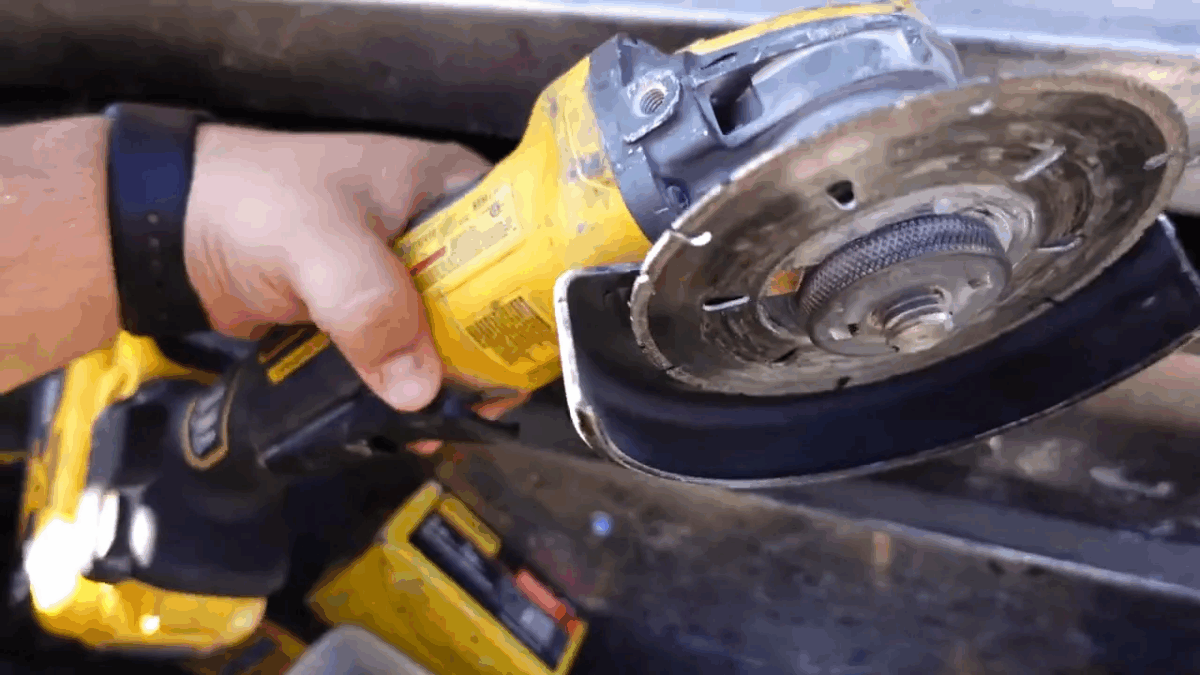
Ladders and working at height
Ladders are the most used items on most jobs. Edina Garage Door Repair carries at least two ladders: a six-foot and a four-and-a-half-foot variant. One of the ladders is a comfortable model used for most tasks because it allows the technician to work in stable, ergonomically-friendly positions when installing or servicing openers and tracks.
- Types: step ladders and combination ladders are popular. The comfortable ladder mentioned is favored for daily use.
- Load rating: use ladders rated for at least 300 pounds for safety and stability.
- Work positioning: choose ladder heights that allow hands-on work without overreaching.
- Regular inspection: check rungs, locks, and feet before each use.
Core hand tools for nearly every job
There is a compact set of hand tools that will be used repeatedly when technicians fix garage door systems. Edina Garage Door Repair stresses that these are the “go-to” tools one reaches for dozens of times during a typical day.
- Wire cutters and needle-nose pliers — for electrical connections and small hardware adjustments.
- Vice grips — for temporary holds and manipulating small parts.
- Tension bars — necessary when adjusting torsion springs safely and accurately.
- Angular/punch cutters — helpful for manipulating metal components and trimming small parts.
- Half-inch screwdriver and Phillips head — common fastener sizes found on doors and openers.
- A set of levels — every door must be square and level to operate properly.
- Wedge bar and staple gun — often used for vinyl finishing, trim, and insulation work.
- Magnetic 7/16 bit holder — a staple for quick driving of self-tappers and similar screws.
- Deep sockets — half-inch, 9/16-inch, and 7/16-inch are the three most used socket sizes for hardware and springs.
Edina Garage Door Repair recommends carrying a small, well-organized tray or pouch with these essentials. Many technicians keep magnetic bit holders in their back pocket for quick access.
Power tools that save time
Power tools are the time-savers that separate occasional DIY attempts from professional installations. The list below outlines which power tools Edina Garage Door Repair considers essential and why.
- Impact driver — indispensable for removing and installing bolts quickly. Most jobs will use an impact driver multiple times.
- Grinder with diamond cut blades — used for cutting metal and for quickly adapting parts. The grinder is labeled “very important” for fast material removal and trimming.
- Skill saw (circular saw) — a 6.5-inch saw is recommended, particularly in regions where “California tip-up” doors or similar configurations require field trimming.
- Finishing nailers — for vinyl and trim work, a finishing nailer like a Ryobi model helps install vinyl wraps or stop molding neatly.
- Second impact and backup batteries — redundancy keeps work moving without delays for charging.
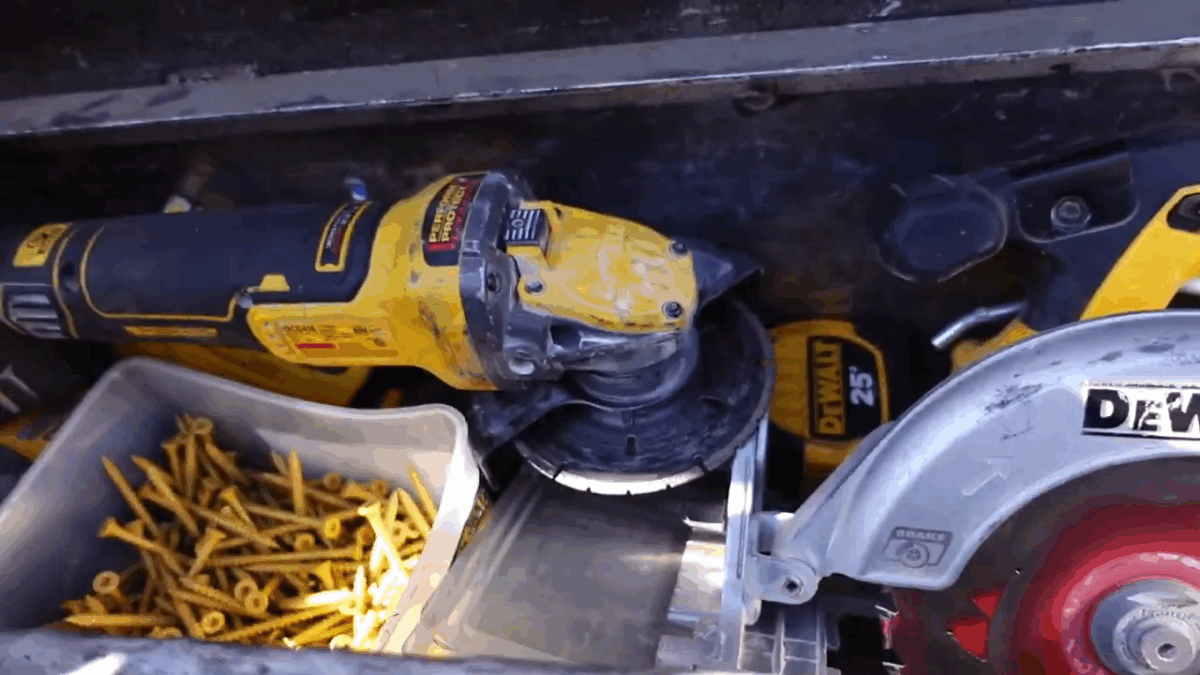
Edina Garage Door Repair keeps extra chargers and batteries to avoid downtime. For technicians who travel between multiple jobs in a day, this redundancy is critical.
Inventory: springs, openers, and consumables
Reliable parts inventory is essential for quick fixes. Springs, in particular, are mission-critical: the wrong spring on a job can mean a wasted trip and extra costs. Edina Garage Door Repair recommends ordering springs and parts as needed but always keeping a core inventory on hand.
- Keep a range of torsion springs and extension springs commonly used in the service area.
- Maintain a stock of common hinges, rollers, straps, and cables.
- Openers: carry popular models or be prepared to install owner-supplied units.
- Consumables: screws, self-tapping screws, bolts, and washers in common sizes.
Inventory budgeting tip: Edina Garage Door Repair mentions placing large orders for springs when necessary. A single significant order could be in the thousands, but the steady replenishment strategy helps manage cash flow.
Putting together a job kit: what every tech carries daily
A daily kit reduces guesswork. Edina Garage Door Repair organizes equipment into a primary tool tray, secondary toe box, and a parts area on the rack. The core items to include in a daily kit are:
- Impact driver with deep sockets (1/2″, 9/16″, 7/16″)
- Set of screwdrivers (Phillips and flathead)
- Wire cutters, needle-nose pliers, and vice grips
- Tension bars and a punch/angle cutter
- Ladders rated to 300 lbs
- Grinder and circular saw
- Finishing nailer and nail supply
- Bits, chargers, and batteries
- Assortment of springs and fasteners
These items are selected because Edina Garage Door Repair uses them on nearly every service call. When learning to fix garage door systems, mastering these tools and knowing how to use them safely will shorten the learning curve dramatically.
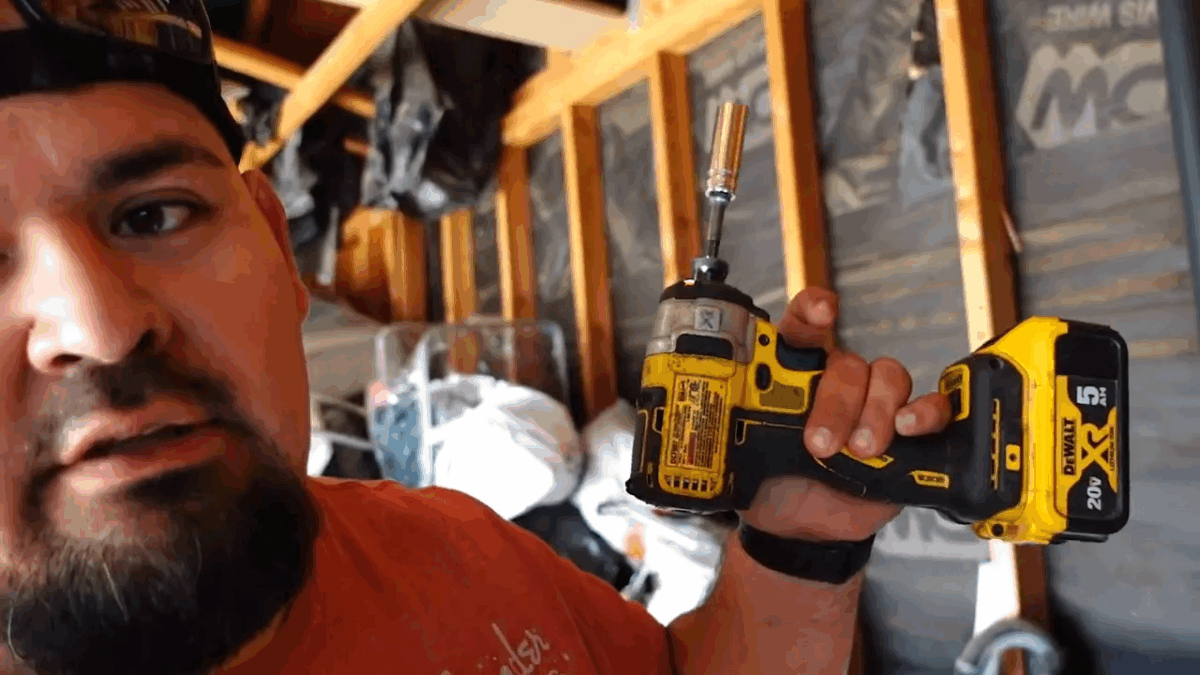
How a typical opener replacement unfolds
One common job is replacing a garage door opener. Edina Garage Door Repair describes a typical opener install that reflects the most efficient approach:
- Assess the setup: confirm door balance and track alignment before removing the old opener.
- Disconnect and safely stow the old unit — keep it until the new one is fully operational, in case parts or wiring adapters are needed.
- Mount the new opener: use the right bracket, motor mount, and secure with deep sockets and an impact driver.
- Wire the opener: connect safety sensors, limit switches, and power. Test the safety reverse features immediately.
- Adjust travel limits and force settings according to the door’s weight and movement.
- Final test: multiple open/close cycles, safety reversal checks, and verifying remote controls and wall button.
In a real example, an opener replacement that began with the homeowner attempting to install on their own was completed on-site in about thirty minutes once the professional approach and tools were applied. Edina Garage Door Repair uses this example to stress that preparedness and the right tools dramatically shorten service time.
Safety and best practices
Working with garage doors involves dealing with heavy moving parts and high spring tension. Edina Garage Door Repair insists on the following safety practices:
- Never attempt torsion spring adjustments without the correct tension bars and training.
- Always secure the door with clamps or locking pliers when working under springs or in the track.
- Use eye protection and hearing protection when cutting metal or grinding.
- Check ladders and power tool cords for wear before the job.
- Test safety sensors and auto-reverse features on openers after installation.
Safety equipment and disciplined procedures prevent accidents and keep liability low. The cost of proper PPE and training is small compared to the risk of an injury or a damaged jobsite.
Starting a garage door business: realistic cost estimate
For readers who want to turn this trade into a business, Edina Garage Door Repair provides a realistic financial snapshot. The important numbers include tool costs, vehicle setup, and stocking parts:
- Core tools: $1,500 to $2,000 (impact, sockets, grinders, saws, hand tools)
- Rack and toolboxes: about $1,000 (Harbor Freight and aftermarket options exist)
- Replacement inventory: springs and common parts — variable, but expect to place orders in the thousands periodically
- Starting vehicle: a reliable truck or van; avoid the cheapest options that fail early. A dependable used truck around $5,000 (market dependent) is a more practical path than a very low-cost model.
Overall startup investment: Edina Garage Door Repair estimates a range close to $7,500 to $10,000 to be operational. This includes a reliable vehicle, racks, toolboxes, core tools, and initial parts inventory. The recommendation for newcomers is to learn the trade under an experienced operator, start on weekends, and scale up as calls increase.
Troubleshooting common scenarios
Several common situations appear repeatedly in field service work. Edina Garage Door Repair offers quick troubleshooting tips:
- Opener chain fell off — Inspect the drive sprocket, re-tension the chain, and ensure the rail alignment is correct. Replace worn chains or sprockets.
- Door not level — Use shims and track adjustments. If the door hangs, check for bent tracks or missing rollers.
- Spring issues — Replace springs as matched pairs when possible and ensure the correct spring size for door weight. Never improvise with mismatched springs.
- Remote or sensor failure — Check wiring and replace batteries; confirm sensor lenses are aligned and clean.
Record-keeping helps: tracking what was replaced, adjustment settings, and part numbers saves time on repeat service calls.
How to build skills: the weekend warrior approach
Edina Garage Door Repair recommends learning by doing, but in a controlled way. The suggested approach:
- Start by shadowing a professional or volunteering to assist on jobs.
- Practice basic tasks: roller replacement, hinge swaps, and opener installs on a single-car door under supervision.
- Learn electrical basics for opener wiring and sensors in low-risk environments before attempting live jobs.
- Build a small parts inventory to handle common tasks without multiple trips.
- Gradually accept more responsibility, then transition to full-time as confidence and referrals grow.
This gradual path minimizes risk and provides real revenue while building competence.
Daily routine for efficiency
Efficiency is a repeatable routine. Edina Garage Door Repair outlines a simple workday blueprint:
- Prepare the truck the night before: charge batteries, check fluids, and load common parts.
- Start calls strategically: route by geography to minimize drive time.
- Use the same core toolset on every job to avoid wasted time searching.
- Finish the day with a checklist: return unused parts, restock consumables, and check tools for damage.
Following a routine keeps the day predictable and maximizes billable time.
FAQ
How much does it typically cost to fix garage door springs?
Replacing garage door springs varies by door size and spring type. Edina Garage Door Repair recommends budgeting for spring replacement costs that include parts, labor, and trip fees. For many standard residential doors, expect a mid-range cost, but always request a written estimate and verify spring specifications before replacement.
What are the essential tools to fix garage door springs safely?
Tension bars, deep sockets (1/2″, 9/16″, 7/16″), vice grips, and a reliable ladder are essential. Training is critical; springs are under high tension and can be dangerous if handled incorrectly.
Can a homeowner fix garage door openers themselves?
Homeowners can handle basic opener troubleshooting such as replacing remotes or checking sensor alignment. Replacing openers is feasible if the homeowner is comfortable with basic wiring and mechanical mounting, but handling springs or complex adjustments is better left to experienced technicians.
How should a small start-up budget for inventory?
Start with a small inventory of the most common springs, rollers, hinges, and fasteners. Place larger orders for springs and specialty parts as call volume increases. Edina Garage Door Repair suggests planning for periodic large orders while keeping a core daily stock to avoid delays.
What is the fastest way to learn to fix garage door problems?
Combine hands-on apprenticeship with formal safety training. Working alongside a seasoned technician on real jobs accelerates learning and builds confidence. Supplement practical experience with manufacturer installation guides and local code familiarity.
How much should one invest initially to be ready to fix garage door jobs professionally?
Expect to invest between $7,500 and $10,000 for a reliable vehicle, rack, toolboxes, core tools, and initial parts inventory. Smaller budgets are possible if one begins as a helper or focuses on specific services while growing the business gradually.
practical steps to move forward
Edina Garage Door Repair has assembled this guide to help readers understand what it takes to fix garage door issues professionally. The clear takeaway is that preparation pays: a reliable vehicle and rack, a compact set of core hand tools, a few key power tools, and a sensible inventory of springs and parts will allow one to tackle most service calls efficiently.
For those who want to move into the trade, start small, learn from experienced technicians, and invest strategically in tools and parts. For homeowners who want to perform limited repairs, focus on safe, low-risk tasks and know when to call a professional. In either case, the right tools and respect for safety are the foundations of success.
Edina Garage Door Repair encourages readers to keep learning, to organize their kits, and to always prioritize safety when working with springs and opener systems. With the right preparation and tools, the ability to fix garage door problems becomes an attainable, profitable skill.



